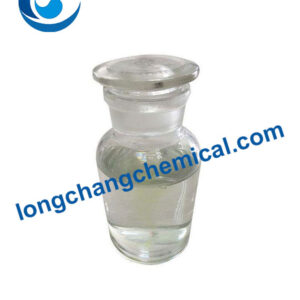Description
NMM / 4-Methylmorpholine / N-Methylmorpholine CAS 109-02-4
Items |
Result |
Appearance |
Liquid |
Content |
99.0%min |
Moisture |
<0.04% |
HeavyMetals |
<0.002% |
What is NMM?
NMM, Other name is N-methylmorpholine; 4-Methylmorpholine. It is an important fine chemical product. It is an excellent solvent, emulsifier, corrosion inhibitor, polyurethane foam catalyst, and can also be used as a pesticide intermediate. It is also used in the synthesis of fine chemical products such as surfactants, lubricant coolants, metal rust inhibitors, and fiber treatment agents.
NMM Usage
1. 4-Methylmorpholine can be used as a surfactant, extractant, and corrosion inhibitor.
2. 4-Methylmorpholine is also widely used in the fields of pesticides and medicine.
3. N-Methylmorpholine is a heterocyclic tertiary amine with ether and amine properties. It is widely used in the synthesis of pesticides, such as pesticides, fungicides, and plant growth regulators.
4. 4-Methylmorpholine is also used in the synthesis of fine chemical products such as lubricating oil coolants, metal rust inhibitors, and fiber treatment agents.
NMM Packaging
200kg drum,one 20FCL can load 16ton with pallet.
Same series products
N-Methylmorpholine |
109-02-4 |
4-Methylmorpholine N-oxide |
7529-22-8 |
N-Ethylmorpholine |
100-74-3 |
N-FORMYLMORPHOLINE |
4394-85-8 |
Contact Us Now!
If you need COA, 4-methylmorpholine MSDS or TDS, please fill in your contact information in the form below, we will usually contact you within 24 hours. You could also email me info@longchangchemical.com during working hours ( 8:30 am to 6:00 pm UTC+8 Mon.~Fri. ) or use the website live chat to get prompt reply.
Some common problems and possible causes that may occur during the polyurethane foaming process include:
1, Bubble holes: bubbles or holes produced during the foaming process.
Reason: It may be uneven mixing, insufficient addition of foaming agent, too high or too low ambient temperature, or inaccurate material proportioning.
2, uneven density: the density of the foam material changes or uneven.
Reason: Insufficient mixing, inaccurate proportioning, not long enough foaming time or large changes in ambient temperature may lead to uneven density.
3, Shrinkage: the material shrinks or deforms after foaming.
Reason: It may be caused by too large a change in ambient temperature, cooling, vibration or pressure changes encountered in the foaming process, as well as the selection of foaming materials and other factors.
4, viscosity changes: the viscosity of the foaming material changes in the process of use.
Reason: It may be caused by unstable quality of raw materials, improper storage conditions or insufficient mixing.
5, burrs: burrs or not smooth on the surface of the material after foaming.
Reason: It may be caused by insufficiently smooth mould or improper use of mould release agent.
Solving these problems usually requires careful monitoring and adjustment of all aspects of the production process to ensure that the quality of the raw materials, the accuracy of the ratios, as well as the control parameters (such as temperature, mixing time, environmental conditions, etc.) in the production process are in the appropriate range.







Reviews
There are no reviews yet.